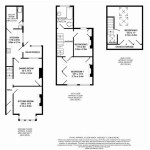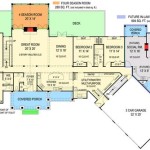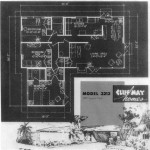House Drainage Plans Brisbane: Understanding Your Plumbing Infrastructure
A well-designed house drainage plan is crucial for a functional and healthy home in Brisbane. It ensures the effective removal of wastewater and stormwater, safeguarding against potential damage and protecting the environment. When building or renovating a home, it's essential to understand the intricacies of drainage plans and their importance. This article explores the key aspects of house drainage plans in Brisbane, including the different types, components, and factors to consider when designing or reviewing one.
Types of House Drainage Plans
There are two main types of drainage systems used in homes: sanitary drainage and stormwater drainage.
- Sanitary Drainage: This system handles wastewater from sinks, toilets, showers, and other fixtures. It typically involves a network of pipes that flow towards a sewer main or septic tank.
- Stormwater Drainage: This system manages rainwater runoff from roofs, driveways, and other impervious surfaces. It often involves gutters, downpipes, and underground pipes that direct water to a storm drain or soakaway.
Components of a House Drainage Plan
A comprehensive house drainage plan should include the following essential components:
- Drainage Pipes: These are the primary conduits for transporting wastewater and stormwater. Pipes are typically made of PVC, clay, or concrete, with different sizes depending on the flow rate and type of waste.
- Fittings: These connect drainage pipes, including bends, elbows, tees, and traps. Traps prevent sewer gases from entering the home.
- Wastewater Treatment System: This can be a sewer connection to the public system or a septic tank for properties without sewer access. The system must be correctly sized and maintained for efficient treatment.
- Stormwater Discharge System: This directs rainwater to a stormwater drain or an approved soakaway, minimizing flooding and erosion.
- Ventilation System: Adequate ventilation prevents sewer gases from accumulating in the drainage system and entering the home.
Factors to Consider When Designing a House Drainage Plan
Several factors influence the design of a house drainage plan, including:
- Site Topography: The slope and elevation of the land influence the flow of wastewater and stormwater. A steep slope may require a more intricate drainage system.
- Soil Type: Soil permeability affects the effectiveness of soakaways for stormwater. Clay soil requires different solutions compared to sandy soil.
- Building Design: The size and layout of the house determine the length and number of drainage pipes needed.
- Local Building Codes: Brisbane has specific building codes and regulations regarding drainage systems. Complying with these codes is crucial for legal and safe practices.
- Environmental Considerations: Sustainable drainage practices are becoming increasingly important. Minimizing runoff and protecting water quality are crucial factors to consider.
It is essential to consult with a qualified drainage plumber or building designer to ensure a properly designed drainage plan that meets all relevant regulations and addresses the specific needs of your property. A well-designed drainage plan safeguards your home, improves its functionality, and contributes to a healthy and sustainable environment.

How To Obtain Before You Dig Plans

Why You Need A Drainage Plan For Your New Home Homes By Howe

Where Can I Find Drainage Plans For My House Soho Real Estate

Where Can I Find Drainage Plans For My House Soho Real Estate

City Council Detail Plans 1930s 1960s There Once Was A Creek

Where Can I Find Drainage Plans For My House Soho Real Estate

Subdivision Restrictions Town Planners Brisbane Consult Planning

How To Find The Sewer Line On Your Property Steps Pictures And Where It Pipe Relining Company

Hydraulic Drawings

Brisbane Stormwater Drains Built Before The Great Depression To Be Upgraded Canberra Times Act








